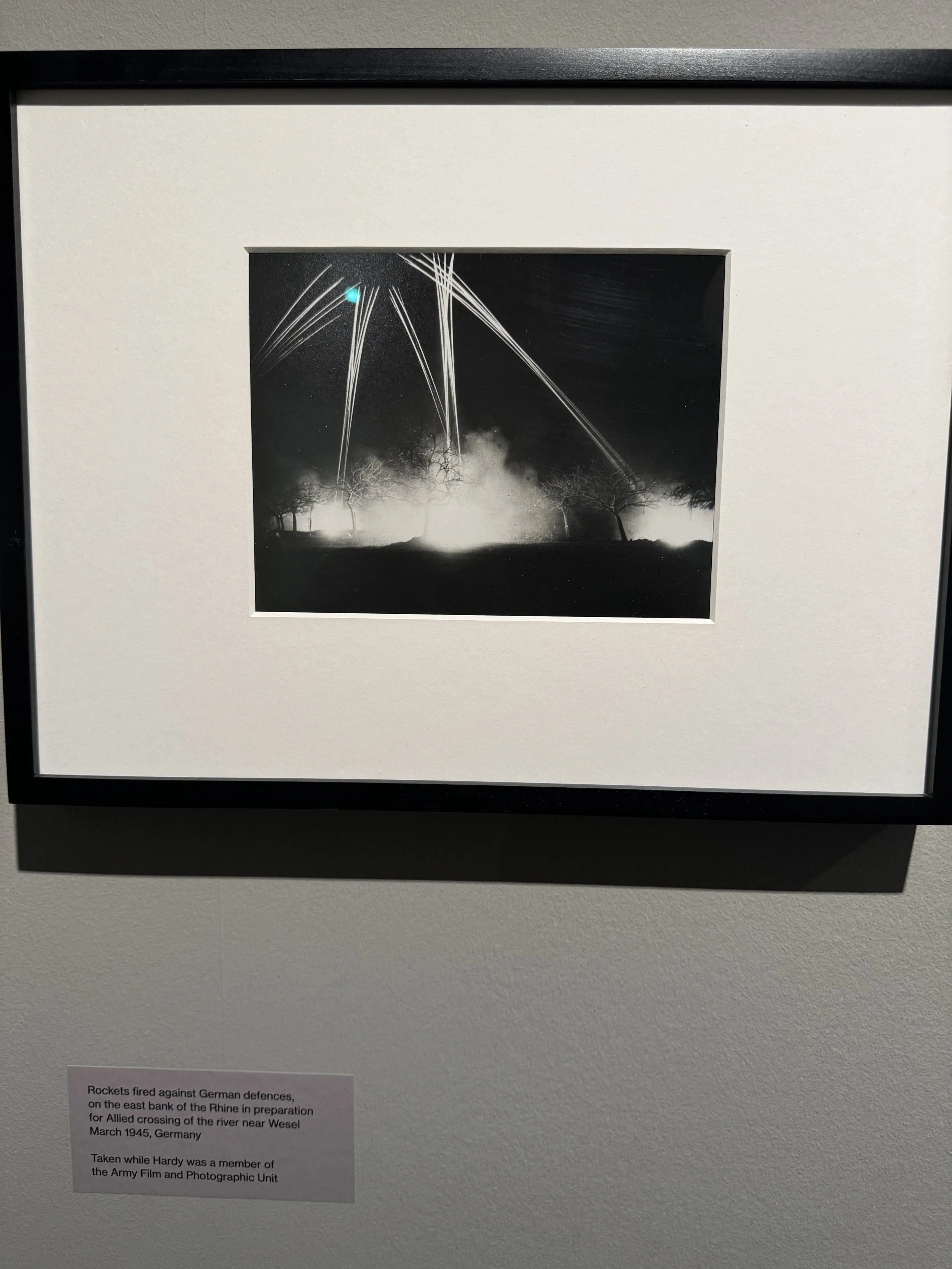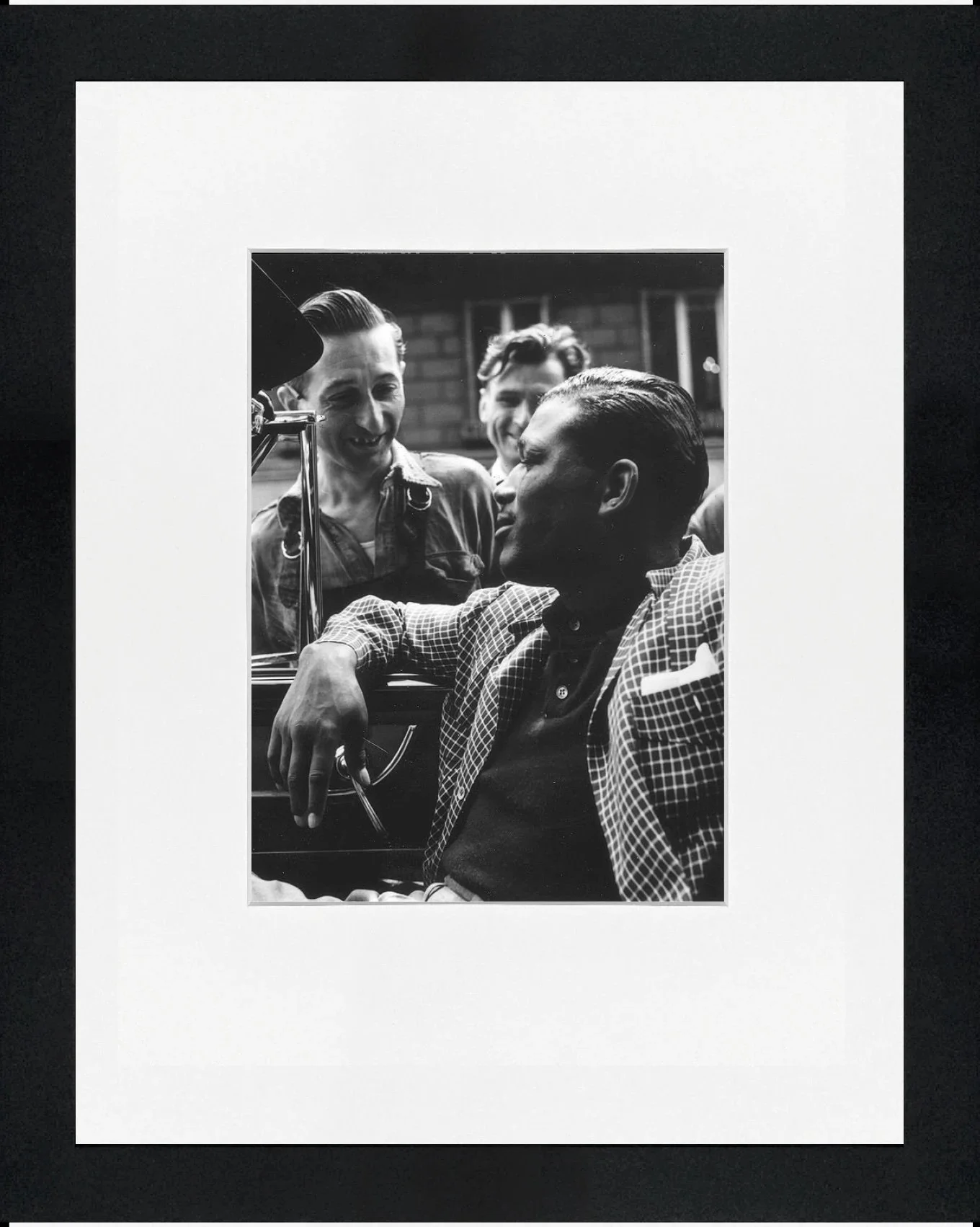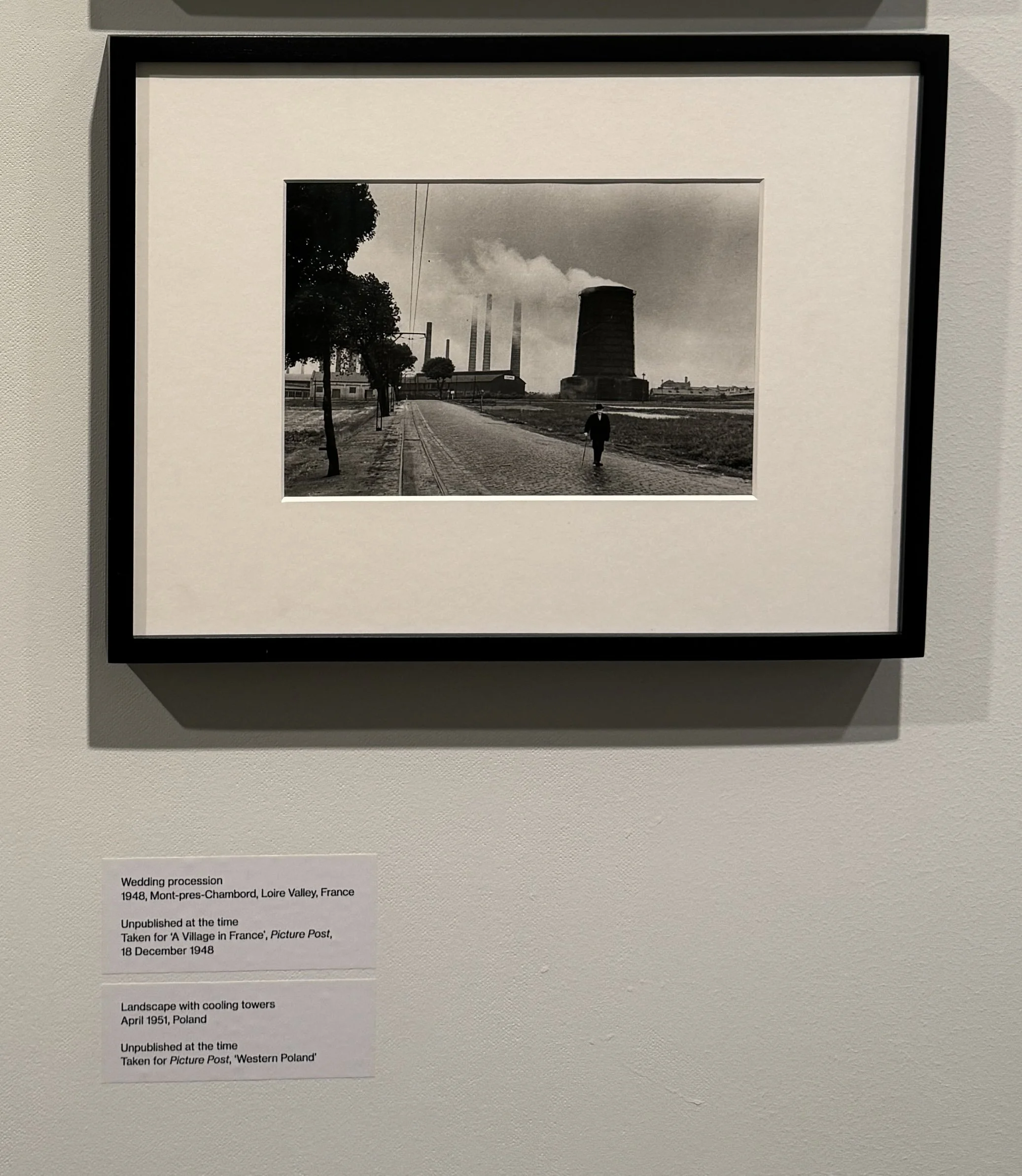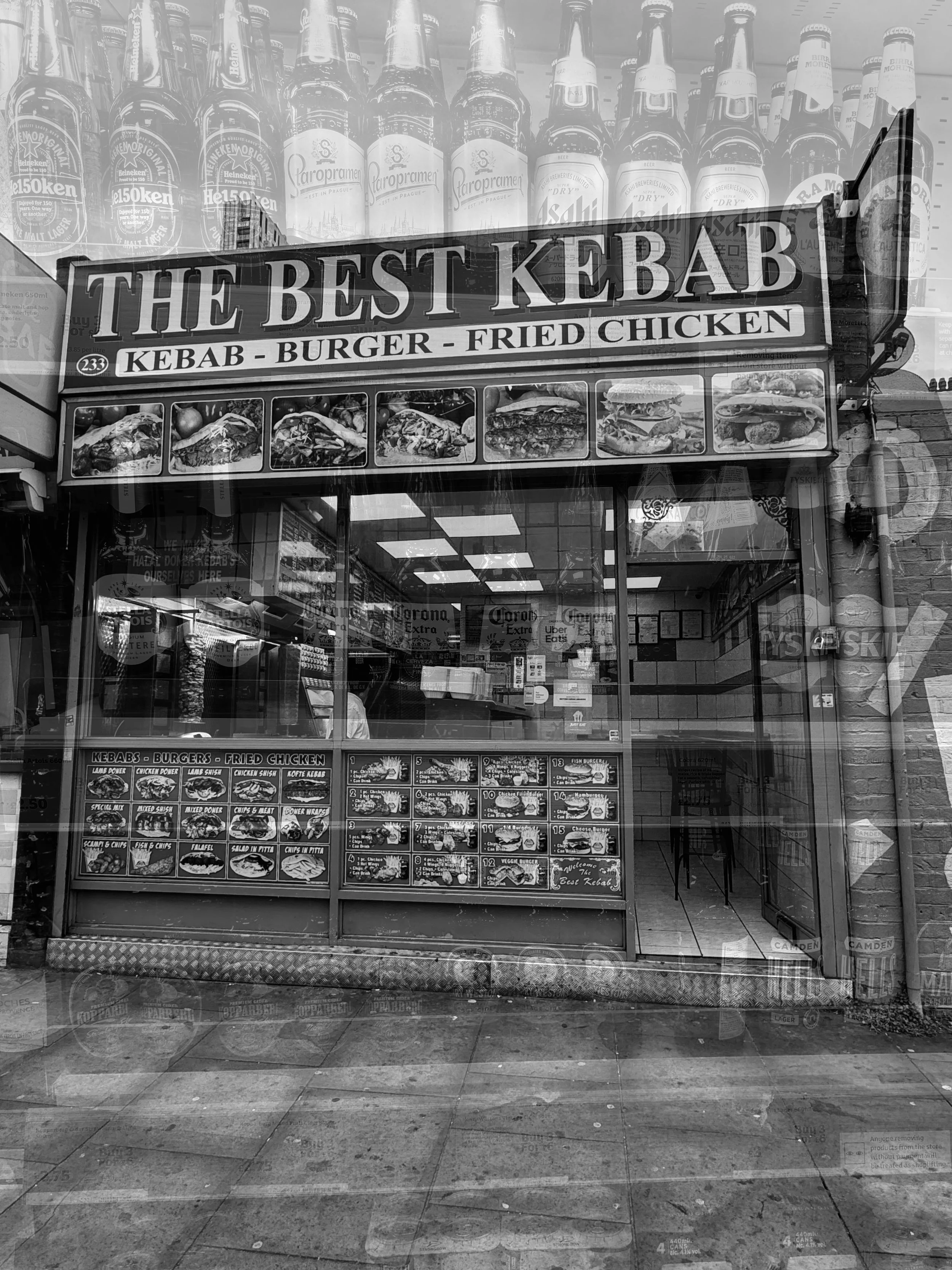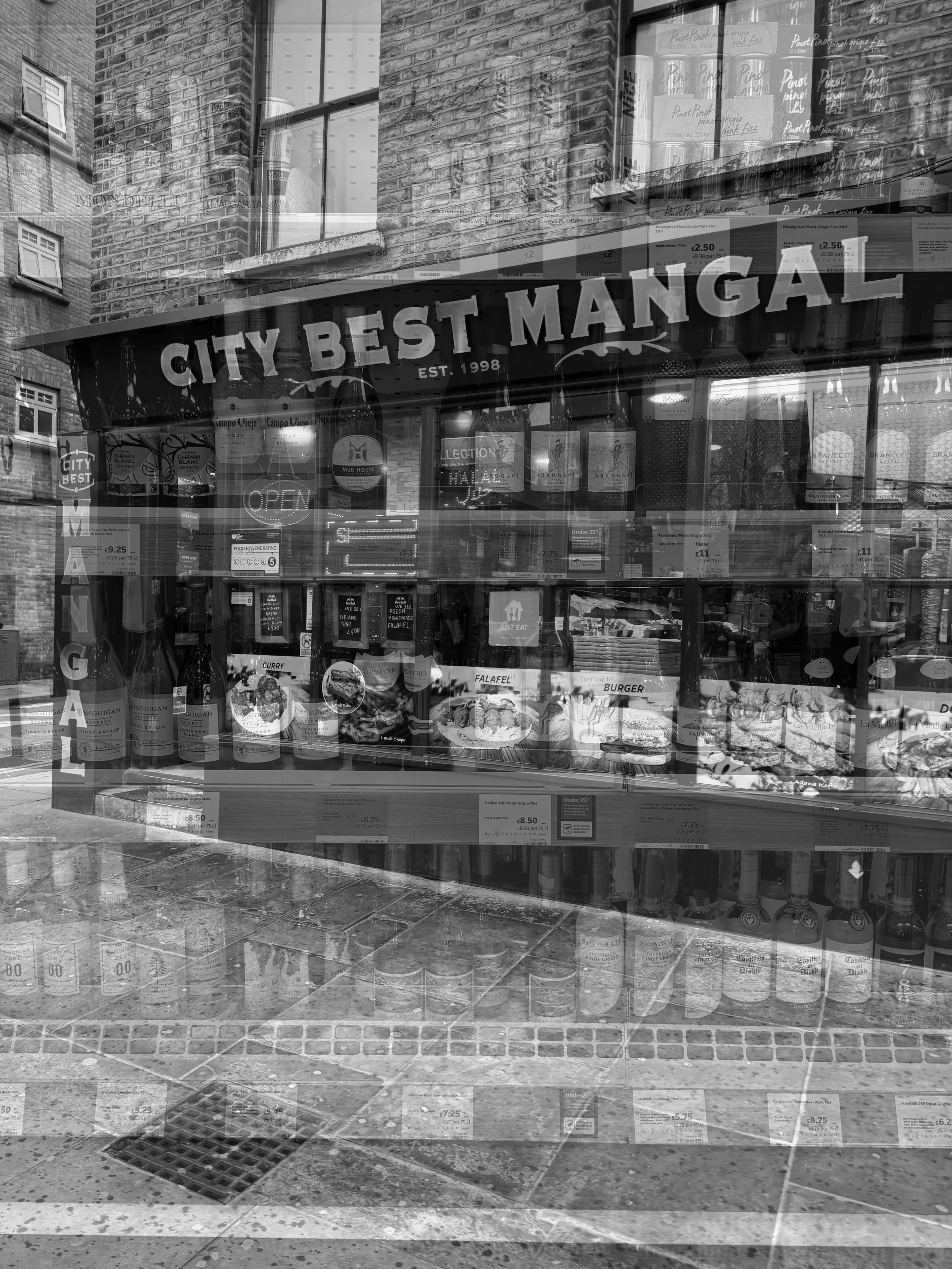Left to Right:
Bert Hardy, Greek government troops (trained and equipped by British forces) at lookout point above the River Nestos, near to the border with the People's Republic of Bulgaria. Taken during the Greek Civil War (1946-49) when Greek royal government tought against the Communist-led Democratic Army of Greeco 1948, Greece, 1948
Bert Hardy, Three Commandos from Greek government forces (equipped with British berets and US Army jackets) near Karpenissi, during the Greek Civil War, 1946-49 1948, Greece, 1948
Bert Hardy, A man is ushered from his orchard by government forces as fighting draws near, during the Greek Civil War, 1946-49 1948, Greece, 1948
The series I selected are images Bert Hardy shot during the Greek Civil War on 35mm. The photos have the clear underpinnings of a Post-WWII West versus Communist conflict. Hardy notes in his captions the Greek government troops are British trained and equipped by both the Brits and Americans. With these three images it the captions do more talking for context than the images. What links the images together is a stone wall. The first image on the left shows the wall being used with sandbags as a makeshift bunker, the central photo shows soldiers taking cover along a similar looking wall, finally the photo on the right displays a man leaving his farm with the wall in the photos background. While there is no proof these are the same walls other than the photos being shot on the same day, it is a neat visual trick the gallery’s curators have done to make it appear like a chronological series of events, where Hardy snapped photos of his journey along this path the wall guards. These unify the photos in a sense, while capturing scenes where Hardy is more of a witness than anything. Once again, the captions do provide insight into the political underbelly of things, but the photos feel much more like Hardy just capturing moments as he sees them walking along this path.
Bert Hardy, Rockets fired against German defences, on the east bank of the Rhine in preparation for Allied crossing of the river near Wesel March 1945, Germany, 1945
Bert Hardy, Robinson And Fans, 1951
Bert Hardy, Landscape with Cooling Towers, 1951
I chose these 3 photos as they struck me for different reasons. Compositionally I felt there was very little that unified them, but they all spoke to me in unique ways. Furthermore, I think it goes to show the dynamism in Hardy’s range as a photographer, as he isn’t bound to any one technique. Beginning with the image of the rockets being fired against German defenses, I am particularly struck by the contrast in light. The contrast of the rockets’ trails against the night sky creates a sort of dystopian effect that eliminates the need for the caption. The contrast Hardy creates in the black and white makes an almost alien like effect, where it could be laser beams shooting down onto Earth. All the caption does is provide an understanding of the exact moment that is ongoing in the image. Hardy shoots this image at night using a wide open aperture in order to capture the entire scene, and does so masterfully, which is especially difficult given it is being done on film! The photograph actually reminds me of the closing bit of Oppenheimer when viewers are left with this scary sort of meditation on atomic weapons and their consequences. I think Hardy creates a similar thought provoking effect here. The photo of Sugar Ray Robinson caught my attention as it portrays such a famous fighter in such a sort of serene position. The photos use of a mid range aperture, maybe F11, creates this effect where we see Robinson and the face of a fan in the street, both in focus. For a boxer to be seen having a happy interaction with another person in close contact, especially in an age without social media, was a rare thing. It humanizes Robinson in a way that is impossible to capture in the ring. One doesn’t need to read the caption to understand what’s going on, unless of course they don’t recognize Robinson. In that case, the entire effect of the photo may be lost on the viewer. I think this photo best works as an individual as it forces the peaceful nature of it to become more emphasized and recognizable. Finally, Landscape with Cooling Towers draws me in entirely for its use of lines in its composition. Shooting likely at F22, Hardy frames this man walking away from a power plant with the road leading to the plant, the power lines above him, the smoke rising from the reactor, the verticals of all the smokestacks, and finally the horizontals of the buildings themself. I think the caption is entirely needed for any sort of message in the photo, as without it there is virtually no way to discern its location. Perhaps it was showing rebuilding efforts after WWII, but I can’t even be sure. This image presented in a series, like the curators did for this exhibit, is when its at its strongest. The curators framed it with two other Hardy images with incredibly strong line usage. Altogether the images displayed a sort of mastery from Hardy of yet another technique. I think displaying them together also works to create a sort of visual correlation and context that maybe supersedes whatever his message is.
For my “The Londoners” attempt I instantly thought of drinking culture in London as the center of my ideas. It seems like every day if you step outside after five in the evening each pub gradually becomes full with people imbibing and socializing after a long day at work. Besides the tube, this is perhaps the great unifier. Beyond that, there is the classic London drunk food: Kebab. I sought to combine the two in overlapping images as I find the combination fascinating. Somehow this food, a staple of the Arab (non-drinking) world, has become the center of drunk food… oh the irony. I think the editing and composition of these images is what makes them work together. By turning them black and white it allows all of the images to blend a lot nicer than if they had their full range of colors. The grid-like overlay of the drinks on each kebab shop also allows for a less messy double exposure. I feel like shooting people in a pub or drinks in a pub would make it harder to find a natural overlap in the images. It was much easier to shoot this all on my iPhone and edit using the photos app and Photoshop, rather than try and do double exposures on film.


